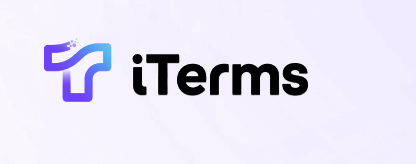11 用户界面设计之布局概述
在安卓应用程序的开发中,用户界面设计尤为重要。恰当的布局不仅能够提升用户体验,还能使应用的功能更易于使用。本章将深入探讨安卓应用的布局,包括不同类型的布局、布局的基本属性,以及在设计和实施中常见的最佳实践。通过对布局的理解,您将为后续的视图组件章节奠定基础。
布局的概念
在安卓中,布局是指用户界面中视图组件的组织和排列方式。布局文件通常以XML格式编写,每个布局文件可包含多个视图组件,例如 TextView、Button、ImageView 等,这些组件共同构成了应用的界面。
常用的布局类型
安卓提供了多种布局类型以适应不同的应用需求,以下是几种常见的布局类型:
1. 线性布局(LinearLayout)
LinearLayout 是最基本的布局之一,子视图在该布局中可以垂直或水平排列。通过设置 orientation 属性,我们可以选择排列方向:
<LinearLayout
android:layout_width="match_parent"
android:layout_height="wrap_content"
android:orientation="vertical">
<TextView
android:layout_width="match_parent"
android:layout_height="wrap_content"
android:text="Hello, World!" />
<Button
android:layout_width="wrap_content"
android:layout_height="wrap_content"
android:text="Click Me" />
</LinearLayout>
2. 相对布局(RelativeLayout)
RelativeLayout 允许通过相对定位来安排视图。您可以指定视图相对于其他视图的位置,这使得布局更灵活,尤其适合动态应用场景。
<RelativeLayout
android:layout_width="match_parent"
android:layout_height="match_parent">
<TextView
android:id="@+id/textView"
android:layout_width="wrap_content"
android:layout_height="wrap_content"
android:text="Hello, World!"
android:layout_centerInParent="true"/>
<Button
android:layout_width="wrap_content"
android:layout_height="wrap_content"
android:text="Click Me"
android:layout_below="@id/textView"
android:layout_centerHorizontal="true"/>
</RelativeLayout>
3. 约束布局(ConstraintLayout)
ConstraintLayout 提供了比 RelativeLayout 更强大的布局功能。它允许您通过设置约束来精确控制视图的位置和大小,适合复杂的界面设计。
<androidx.constraintlayout.widget.ConstraintLayout
android:layout_width="match_parent"
android:layout_height="match_parent">
<TextView
android:id="@+id/textView"
android:layout_width="0dp"
android:layout_height="wrap_content"
android:text="Hello, World!"
app:layout_constraintTop_toTopOf="parent"
app:layout_constraintStart_toStartOf="parent"
app:layout_constraintEnd_toEndOf="parent"/>
<Button
android:layout_width="wrap_content"
android:layout_height="wrap_content"
android:text="Click Me"
app:layout_constraintTop_toBottomOf="@id/textView"
app:layout_constraintStart_toStartOf="parent"/>
</androidx.constraintlayout.widget.ConstraintLayout>
4. 网格布局(GridLayout)
GridLayout 是一种将视图安排成行和列的布局。它非常适合显示表格数据或需要栅格布局的界面。
<GridLayout
android:layout_width="match_parent"
android:layout_height="wrap_content"
android:columnCount="2">
<TextView
android:layout_width="0dp"
android:layout_height="wrap_content"
android:text="Cell 1"
android:layout_columnWeight="1"/>
<TextView
android:layout_width="0dp"
android:layout_height="wrap_content"
android:text="Cell 2"
android:layout_columnWeight="1"/>
</GridLayout>
布局属性
每种布局类型都有特定的属性来控制子视图的外观和位置。一些常用的布局属性包括:
layout_width和layout_height: 控制视图的宽度和高度,取值可以是match_parent、wrap_content或具体的尺寸值。padding: 设置视图内边距,使内容与视图边缘之间保持距离。margin: 设置视图外边距,使视图间保持距离。gravity: 控制视图内部的内容排布,如居中、左对齐、右对齐等。
最佳实践
- 选择适合的布局类型: 根据应用的需求选择最合适的布局类型以减少复杂性。
- 使用约束布局: 如果您的布局比较复杂,尽可能使用
ConstraintLayout,它可以减少嵌套层级,并提高性能。 - 避免硬编码尺寸: 尽量使用相对尺寸,如
match_parent和wrap_content,以提升适配性。 - 合理使用权重: 在
LinearLayout中使用layout_weight可以帮助您更好地分配空间。
小结
总体而言,布局是构建安卓应用用户界面的基础。选择合适的布局类型、应用合适的布局属性以及遵循最佳实践,可以大大提高用户体验和应用的易用性。在即将到来的章节中,我们将讨论更为具体的视图组件,这些组件将是实现复杂界面的关键。
接下来,我们将深入探讨视图组件的使用与实现,为设计更为复杂和交互性强的界面打下基础。
